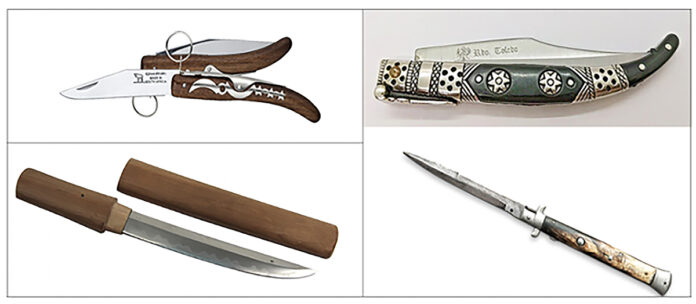Less Accessible Knife Training in 2025 – The Full Stories
Knife training, while often glamorized, has always been a narrow and sometimes controversial study. In 2025, much of the martial arts community gravitates toward Filipino Martial Arts and modern Reality-Based training—approaches that are widely taught, easily accessible, and highly visible online. Yet beyond this mainstream lies a set of lesser-known knife systems, each rooted in distinct histories and cultures, carrying perspectives that are rarely explored but deeply instructive.
Tanto – Japan
Contrary to popular belief, Japan never developed a full “knife culture.” On the battlefield, the bow, spear, and naginata dominated. The tanto served mainly as a utility blade, later tied to ritual practices such as seppuku. Its importance was cultural and symbolic rather than tactical. Italian Knife Styles
Italy’s knife traditions grew out of dueling culture, blending elegance with brutality. The Sicilian stiletto, designed for thrusting, became both weapon and social equalizer. Systems like Paranza Corta survive today, but remain fragmented, passed down by individual masters rather than structured schools.
The Spanish Navaja
Spain’s iconic folding blade, the Navaja, was both tool and weapon. Adopted in Andalusia and carried across Spanish colonies, it became central to working-class and Gitano culture. With blades often over 15 inches, the Navaja’s fighting systems emphasized deception and precision. Today, instruction is scarce and difficult to find.
The Piper System – South Africa
Unlike traditional arts, Piper was born in South African prisons, designed for assassination and sudden violence. Later documented by Nigel February, it emphasizes deception, misdirection, and point-driven icepick grips. Learning Piper highlights not just technique, but the unsettling psychology of predatory blade use.
Libre Knife Fighting – USA
Created by Scott Babb, Libre rejects tradition in favor of modern realities. Drawing from prison violence, offender interviews, and surveillance footage, it focuses on ambush, gross-motor strikes, and fast brutality. Libre treats the knife as a force multiplier, stripped of ritual or sport.
Systema – Russia
Marketed as a Russian special forces art, Systema includes knife training but faces criticism. Demonstrations often rely on compliant partners, lack sparring, and lean heavily on philosophy. While some defend its principles of relaxation and fluidity, many view it as theatrical rather than practical.
Conclusion
From cultural relics to modern adaptations, these knife systems represent the breadth o humanity’s relationship with blades. They remain less accessible than mainstream arts, but for those who explore them, each offers a distinct—and often controversial—window into survival, culture, and combat.
Defensive Knives Part 6 PDF
Defensive-Knives-Part-6Defensive Knives for Urban Environments Part 1
Defensive Knives for Urban Environments Part 2
Defensive Knives for Urban Environments Part 3
Defensive Knives for Urban Environments Part 4


